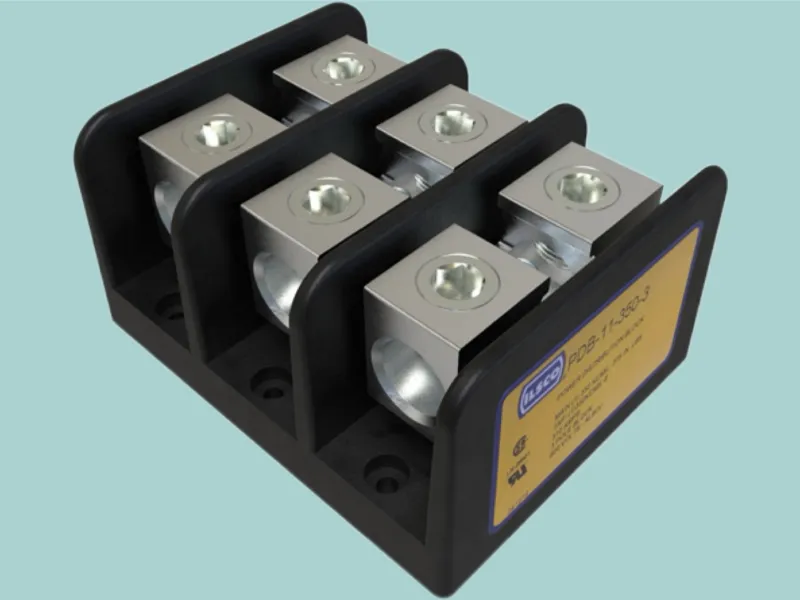- A power distribution block consolidates and distributes electrical power from a single input source to multiple output circuits.
- The primary function of a power distribution block is to streamline the wiring and distribution of electrical power within electrical panels, control cabinets, and machinery.
Power distribution blocks are essential components in electrical systems, offering efficient and organised distribution of electrical power while enhancing safety and flexibility. By leveraging the capabilities of power distribution blocks, engineers and technicians can streamline electrical installations and improve overall system efficiency.
What is a power distribution block
A power distribution block, also known as a terminal block or power terminal block, is a modular insulated block that consolidates and distributes electrical power from a single input source to multiple output circuits. It typically features multiple terminals where conductors can be securely connected, often using screws or clamps. The block itself is made from durable materials such as thermoplastics or metals, ensuring electrical insulation and mechanical strength.
Also read: How does power distribution work from generation to consumption?
Also read: How does spectral power distribution shape our world?
What is a power distribution block used for
The primary function of a power distribution block is to streamline the wiring and distribution of electrical power within electrical panels, control cabinets, and machinery. Here are some common uses.
1. Distribution of power: Power distribution blocks allow for the efficient distribution of electrical power from main power sources to various branch circuits within a system. This helps in organising and managing complex electrical installations.
2. Connection point: They serve as centralised connection points where multiple conductors from different circuits or devices can be terminated and connected securely. This reduces the need for multiple connections directly onto bus bars or terminals, which can lead to clutter and inefficiency.
3. Current monitoring and protection: Some advanced power distribution blocks come equipped with features for current monitoring and overcurrent protection. These blocks can incorporate fuses or circuit breakers to protect downstream circuits from overloads or short circuits, enhancing the safety and reliability of the electrical system.
4. Modularity and flexibility: Power distribution blocks are modular in design, allowing for easy expansion or modification of electrical systems. Additional terminals or circuits can be added as needed without extensive rewiring, making them ideal for applications that require flexibility and scalability.
Considerations for Use
1. Current rating: Selecting a power distribution block with an appropriate current rating is critical to ensure it can safely handle the maximum current expected in the circuit. Exceeding the rated current can lead to overheating and potential damage to the block or connected equipment.
2. Voltage rating: Verify that the voltage rating of the power distribution block matches the voltage of the electrical system in which it will be installed. Using a block with a lower voltage rating than the system can compromise safety and reliability.
3. Mounting and installation: Proper mounting and secure installation of the power distribution block are essential for maintaining electrical connections and ensuring mechanical stability. Follow manufacturer guidelines and standards to minimise the risk of vibration-induced loosening or mechanical failure.
4. Environmental considerations: Consider the operating environment where the power distribution block will be installed. Factors such as temperature extremes, humidity, and exposure to dust or chemicals may necessitate selecting blocks with appropriate environmental ratings and protective enclosures.

